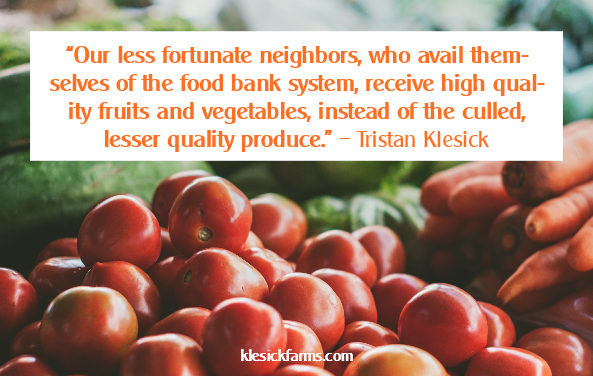We are excited to now offer local milk products from Twin Brook Creamery in Lynden, Washington. You can now add whole, 2%, and 1% milk, half and half, and whipping cream to your regular delivery. Twin Brook milk comes in old fashioned glass bottles, is non-homogenized (the cream rises to the top), is pasteurized using the low temperature vat pasteurization method, and is kosher. They process milk in their freshly renovated bottling facility from their own purebred registered Jersey cows. Jerseys produce milk with a higher protein and butterfat content, which greatly enhances the flavor.
Although Twin Brook Creamery is not certified organic, they produce a high quality natural product that is free from synthetic hormones (such as RBST) that artificially stimulate growth or milk production. Because they strive not to feed any GMO feeds to their cows, their grass fields and pastures are free from commercial fertilizers or pesticides, and any concentrate supplements they have to buy for their animals’ health, so as to give them a balanced diet, are non-GMO whenever possible (e.g., they use barley instead of corn as an energy source). Twin Brook Creamery strives to be the best possible stewards of the land, providing wildlife habitat and using the best management practices that are available.
You can find Twin Brook Creamery products on our website under the “Dairy” category. When ordering dairy products, please keep the following in mind:
Tuesday, Wednesday, and Thursday customers: Orders are due by 8:00 a.m. the Friday before your delivery day.
Friday and Saturday customers: Orders are due by 8:00 a.m. the Wednesday before your delivery day.
We are also happy to once again offer local raw honey. Our honey is the product of hard working Snohomish County bees and Mike and Christa Miller of Sunshine Honey Company. The honey comes in 12 oz. and 25.6 oz. glass jars. We also offer certified organic honey from Brazil. Honey can be found on our website under the “Grocery” category and under “Sweetners.”
Farmer Tristan
Recipe: Greek Marinated Grilled Vegetables
Grilled vegetables are marinated with fresh herbs, lemon juice, garlic and olive oil to create a simple and delicious side dish. Great roasted or broiled as well.
Serves: 4
Ingredients:
1 medium eggplant – sliced in ½ inch rounds
1 large zucchini – sliced on the diagonal
1 large (or 2 small) pattypan squash – sliced in ½ inch rounds
¼ cup olive oil
2 tablespoons lemon juice
2 tablespoons red wine vinegar
2 garlic cloves – grated
½ teaspoon salt
Pinch red chili flakes
¼ cup fresh mint – minced
¼ cup fresh oregano – minced
Instructions:
1. Pre-heat grill on medium-high heat.
2. Place eggplant, zucchini and pattypan squash in a large bowl and set aside.
3. In a small bowl, whisk together olive oil, lemon juice, vinegar, garlic, salt, chili flakes, mint and mint oregano. Pour mixture over the sliced vegetables and toss well to coat.
4. Grill vegetables until soft and slightly charred, about 8-10 minutes flipping once halfway through.
Notes: Dried herbs work fine if you don’t have fresh on hand. Simply use half of the amount listed for fresh since dried herbs are more potent.
From Liz DellaCroce | TheLemonBowl.com
Know Your Produce: Summer Squash
here are numerous varieties of summer squash, ranging from dark green to bright yellow, long to stubby, smooth to lumpy to ridged. Unlike winter squash, these varieties of summer squash have soft, thin skin that is perfectly edible, with varying degrees of light to dense flesh. Some varieties are: zucchini, round zucchini, pattypan, crookneck, zephyr, cousa, tatuma, gourmet globe, tinda, and luffa.
Summer squash is technically not any one vegetable, but comprises many different cultivars of a few different species of edible plant. It also is actually classified as a fruit – a “pepo” or type of berry with a hard outer rind.
Summer squash can be eaten raw or cooked, and have a mild flavor that can range from sweet to nutty, and though the difference in flavor between varieties is subtle, it’s distinct. Summer squash can be grilled, steamed, boiled, sautéed, fried, or used in stir-fry recipes. They mix well with onions and tomatoes in vegetable medleys. Summer squash can be used interchangeably in most recipes. Some types of summer squash can give off a lot of moisture, so depending upon your recipe, you may need to blot grated or cut squash to absorb some of the moisture. Use them within three to four days of purchase for their best taste and texture.




